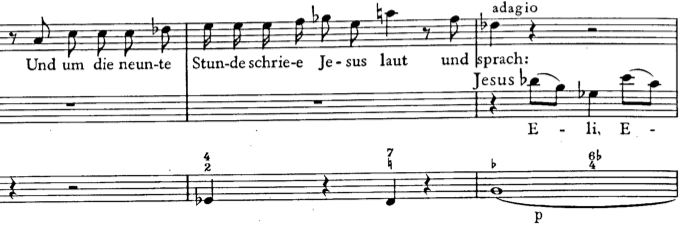One of the most influential and inspiring ethnographers is Clifford Geertz (1926–2006).
Two seminal articles based on his fieldwork in Indonesia are illustrative—both instances of his blending of theory with his signature “thick description” (shenmiao 深描). They should also be compulsory reading for Chinese fieldworkers. Most basically, they are dynamic interpretations.
Geertz describes a ritual “which failed to function properly”—a funeral for a young boy, held in a small town in eastern Central Java, revolving around a slametan communal feast, with all its attendant psychological and social tensions. But the article is so good that a summary can’t possibly suffice: just read it!
Early in his article he explains, in a passage highly relevant to our studies of Daoist ritual:
As has been noted by several writers […], the emphasis on systems in balance, on social homeostasis, and on timeless structural pictures, leads to a bias in favor of “well-integrated” societies in a stable equilibrium and to a tendency to emphasize the functional aspects of a people’s social usages and customs rather than their disfunctional implications. In analyses of religion this static, ahistorical approach has led to a somewhat over-conservative view of the role of ritual and belief in social life.
His reflections are based on a detailed case study:
A young boy, about ten years of age, who was living with his uncle and aunt, died very suddenly but his death, instead of being followed by the usual hurried, subdued, yet methodically efficient Javanese funeral ceremony and burial routine, brought on an extended period of pronounced social strain and severe psychological tension. The complex of beliefs and rituals which had for generations brought countless Javanese safely through the difficult post-mortem period suddenly failed to work with its accustomed effectiveness. To understand why it failed demands knowledge and understanding of a whole range of social and cultural changes which have taken place in Java since the first decades of this century. This disrupted funeral was in fact but a microcosmic example of the broader conflicts, structural dissolutions, and attempted reintegrations which, in one form or another, are characteristic of contemporary Indonesian society.
In principle, through the slametan (“a quiet, undramatic little ritual”) the spirits are appeased and neighborhood solidarity is strengthened. But
in all but the most isolated parts of Java, both the simple territorial basis of village social integration and the syncretic basis of its cultural homogeneity have been progressively undermined over the past fifty years. Population growth, urbanization, monetization, occupational differentiation, and the like, have combined to weaken the traditional ties of peasant social structure; and the winds of doctrine which have accompanied the appearance of these structural changes have disturbed the simple uniformity of religious belief and practice characteristic of an earlier period. The rise of nationalism, Marxism, and Islamic reform as ideologies, which resulted in part from the increasing complexity of Javanese society, has affected not only the large cities where these creeds first appeared and have always had their greatest strength, but has had a heavy impact on the smaller towns and villages as well. In fact, much of recent Javanese social change is perhaps most aptly characterized as a shift from a situation in which the primary integrative ties between individuals (or between families) are phrased in terms of geographical proximity to one in which they are phrased in terms of ideological like-mindedness.
Such tensions increased sharply during the year Geertz was in the field.
It seemed as if the ritual were tearing the society apart rather than integrating it, were disorganizing personalities rather than healing them.
Geertz queries the functionalist explanations of social disintegration or cultural demoralization—that rapid and disruptive social change are reflected in a disintegrated culture, with the broken society of the kampong mirrored in the broken slametan of the funeral ritual, cultural decay leading to social fragmentation; or that the loss of a vigorous folk tradition weakened the moral ties between individuals.
But as he goes on,
It seems to me that there are two things wrong with this argument […]: it identifies social (or cultural) conflict with social (or cultural) disintegration; it denies independent roles to both culture and social structure, regarding one of the two as a mere epiphenomenon of the other. Religion here is somehow the center and source of stress, not merely the reflection of stress elsewhere in the society.
He warns:
We cannot attribute the failure of the ritual to secularization, to a growth in skepticism, or to a disinterest in the traditional “saving beliefs,” any more than we can attribute it to anomie.
We must rather, I think, ascribe it to a discontinuity between the form of integration existing in the social structural (“causal-functional”) dimension and the form of integration existing in the cultural (“logico-meaningful”) dimension—a discontinuity which leads not to social and cultural disintegration, but to social and cultural conflict. In more concrete, if somewhat aphoristic terms, the difficulty lies in the fact that socially kampong people are urbanites, while culturally they are still folk.
[…]
Thus when an occasion arises demanding sacralisation—a life-cycle transition, a holiday, a serious illness—the religious form which must be employed acts not with but against the grain of social equilibrium. The slametan ignores those recently devised mechanisms of social insulation which in daily life keep group conflict within fixed bounds, as it also ignores the newly evolved patterns of social integration among opposed groups which balance contradictory tensions in a reasonably effective fashion. People are pressed into an intimacy they would as soon avoid; where the incongruity between the social assumptions of the ritual (“we are all culturally homogeneous peasants together”) and what is in fact the case (“we are several different kinds of people who must perforce live together despite our serious value disagreements”) leads to a deep uneasiness of which Paidjan’s funeral was but an extreme example. In the kampong, the holding of a slametan increasingly serves to remind people that the neighborhood bonds they are strengthening through a dramatic enactment are no longer the bonds which most emphatically hold them together. These latter are ideological, class, occupation, and political bonds, divergent ties which are no longer adequately summed up in territorial relationships.
In sum, Geertz deduces an incongruity between the cultural framework of meaning and the patterning of social interaction, due to the persistence in an urban environment of a religious symbol system adjusted to peasant social structure.
The driving forces in social change can be clearly formulated only by a more dynamic form of functionalist theory, one which takes into account the fact that man’s need to live in a world to which he can attribute some significance, whose essential import he feels he can grasp, often diverges from his concurrent need to maintain a functioning social organism. A diffuse concept of culture as “learned behavior,” a static view of social structure as an equilibrated pattern of interaction, and a stated or unstated assumption that the two must somehow (save in “disorganized” situations) be simple mirror images of one another, is rather too primitive a conceptual apparatus with which to attack such problems as those raised by Paidjan’s unfortunate but instructive funeral.
This is the kind of integration of thick description with theory to which we should all aspire.
* * *

The other article I’d like to recommend here is Geertz’s
- “Deep Play: Notes on the Balinese Cockfight” (1972: ch.15 of The interpretation of cultures).
Along with a critical discussion, you can view the article here (a useful site). It contains much thoughtful analysis of the place of cock-fighting in Balinese society, but here I”d just like to cite his description of his own relationship with the village —which again remind me strongly of my experience in China.
Early in April of 1958, my wife and I arrived, malarial and diffident, in a Balinese village we intended, as anthropologists, to study. A small place, about five hundred people, and relatively remote, it was its own world. We were intruders, professional ones, and the villagers dealt with us as Balinese seem always to deal with people not part of their life who yet press themselves upon them: as though we were not there. For them, and to a degree for ourselves, we were nonpersons, specters, invisible men.
They moved into an extended family compound, and were soon ignored by most of the village population. But
The indifference, of course, was studied; the villagers were watching every move we made and they had an enormous amount of quite accurate information about who we were and what we were going to be doing. But they acted as if we simply did not exist, which, in fact, as this behavior was designed to inform us, we did not, or anyway not yet.
Ten days or so after their arrival, a large cockfight was held in the public square to raise money for a new school. Most such fights were illegal—with echoes of Chinese values, they were regarded as “primitive,” “backward,” “unprogressive,” and generally unbecoming an ambitious nation. For several reasons the villagers supposed that they could hold this fight without attracting the attention of the law.
But they were wrong. Soon a truck full of policemen armed with machine guns roared up, with villagers scattering in all directions. Geertz and his wife followed suit, following another fugitive as he ducked into a compound—his own, it turned out.
As the three of us came tumbling into the courtyard, his wife, who had apparently been through this sort of thing before, whipped out a table, a tablecloth, three chairs, and three cups of tea, and we all, without any explicit communication whatsoever, sat down, commenced to sip tea, and sought to compose ourselves.
A policeman soon arrived.
Seeing my wife and I, “White Men”, there in the yard, the policeman performed a classic double take. When he found his voice again he asked, approximately, what in the devil did we think we were doing there. Our host of five minutes leaped instantly to our defense, producing an impassioned description of who and what we were, so detailed and so accurate that it was my turn, having barely communicated with a living human being save my landlord and the village chief for more than a week, to be astonished. We had a perfect right to be there, he said, looking the Javanese upstart in the eye. We were American professors; the government had cleared us; we were there to study culture; we were going to write a book to tell Americans about Bali. And we had all been there drinking tea and talking about cultural matters all afternoon and did not know anything about any cockfight.
[…]
The next morning the village was a completely different world for us. Not only were we no longer invisible, we were suddenly the center of all attention, the object of a great outpouring of warmth, interest, and, most especially, amusement. Everyone in the village knew we had fled like everyone else. They asked us about it again and again (I must have told the story, small detail by small detail, fifty times by the end of the day), gently, affectionately, but quite insistently teasing us: “Why didn’t you just stand there and tell the police who you were?” “Why didn’t you just say you were only watching and not betting?” “Were you really afraid of those little guns?” As always, kinesthetically minded and, even when fleeing for their lives (or, as happened eight years later, surrendering them), the world’s most poised people, they gleefully mimicked, also over and over again, our graceless style of running and what they claimed were our panic-stricken facial expressions. But above all, everyone was extremely pleased and even more surprised that we had not simply “pulled out our papers” (they knew about those too) and asserted our Distinguished Visitor status, but had instead demonstrated our solidarity with what were now our covillagers. (What we had actually demonstrated was our cowardice, but there is fellowship in that too.) Even the Brahmana priest, an old, grave, half-way-to-Heaven type who because of its associations with the underworld would never be involved, even distantly, in a cockfight, and was difficult to approach even to other Balinese, had us called into his courtyard to ask us about what had happened, chuckling happily at the sheer extraordinariness of it all.
In Bali, to be teased is to be accepted. It was the turning point so far as our relationship to the community was concerned, and we were quite literally “in.” The whole village opened up to us, probably more than it ever would have otherwise (I might actually never have gotten to that priest and our accidental host became one of my best informants), and certainly very much faster. Getting caught, or almost caught, in a vice raid [SJ: cf. my own run-ins with the Chinese constabulary] is perhaps not a very generalizable recipe for achieving that mysterious necessity of anthropological field work, rapport, but for me it worked very well. It led to a sudden and unusually complete acceptance into a society extremely difficult for outsiders to penetrate. It gave me the kind of immediate, inside view grasp of an aspect of “peasant mentality” that anthropologists not fortunate enough to flee headlong with their subjects from armed authorities normally do not get. And, perhaps most important of all, for the other things might have come in other ways, it put me very quickly on to a combination emotional explosion, status war, and philosophical drama of central significance to the society whose inner nature I desired to understand. By the time I left I had spent about as much time looking into cockfights as into witchcraft, irrigation, caste, or marriage.
On the Li family Daoists, there are modest echoes of Geertz’s approach under “A flawed funeral” in ch.19 of my book, introduced in this post. Note also Catherine Bell’s fine survey of the history of ritual studies. For musics of Indonesia, see Java to jazz.
* * *
Meanwhile next door in ethnomusicology, Bruno Nettl (always a pleasure to read—for a roundup of posts, see here) has outlined types of musical change in his magisterial
- The study of ethnomusicology: thirty-three discussions, ch.19, pp.272–93.
This outline has since been constantly refined, and of course after Geertz’s level of detail it may seem simple. But in brief Nettl suggests a rudimentary four basic types (or levels) of change, with stimulating examples:
1) Substitution: a population that shares and maintains one musical system abandons it for another—an extreme case for which Nettl actually finds no instances.
2) Radical change in a system of music whose new form can definitively still be traced in some way to the old.
3) Gradual, normal change: “any musical system is likely to contain, or require, a certain amount of change as part of its essential character. Most societies expect of their artists a minimum of innovation, and some demand a great deal.” But he goes on to suggest the lesser degrees of change expected in folk societies. “An absolutely static musical culture is actually inconceivable”.
4) Allowable variation: “For musical artifacts such as songs, or in song types, groups, repertories, a certain amount of allowable individual variation may not even be perceived as change.”
As he notes, “all societies may experience all four types of change, but probably to varying degrees”. For those societies where change seems slight, he suggests he goes on to suggest various possible reasons, such as simple technology; societies where musical and social systems have achieved a certain equilibrium; those genres within a culture which resist change—notably religion. Similarly, he notes cultures where change is rapid and dramatic.
This embryonic taxonomy complements his next section, “Adaptation, preservation, survival”, mainly concerning responses to the growing hegemony of Western musics of all kinds, and again with instances. Here he considers three main headings:
1) Abandonment (again, rare)
2) Impoverishment or reduction: diminishing repertories, replacement of instruments, standardization, and so on; in social behaviour, adoption of Western habits like concerts, applause, and so on.
3) Isolated preservation: “relegation to a museum”—particularly relevant to the whole heritage debate. This comment hits the nail on the head:
The desire is to preserve this older music without change, to give it a kind of stability that in fact it probably did not experience in the past, and to do this at the expense of permitting it to function as a major musical outlet for the population.
Again, all this should be essential reading for anyone working on Daoist ritual.
* * *
Apart from heavier scholarly tomes, I may also adduce another book by Nigel Barley, Dancing on the grave—a diverting exploration of the local meanings of mortuary rituals worldwide.
































